Based on a collection of Kosovo postcards from the last century, Kenneth Andresen has launched a research project on this means of communication that bears witness to the country’s history.
Kenneth Andresen, a professor in media production and media studies at the University of Agder in Norway, collects old postcards from Kosovo which tell about the history of the country during the last century.
These pictures show an image of the former Yugoslavian province very different from the one of a country at war that is common nowadays.

Children bathing in the Ibër/Ibar River in Mitrovica. The postcard appears to have been sent to Belgrade in 1967. Photo courtesy of Kenneth Andresen.
One example is this postcard from August 1967 showing children bathing in the Ibër/Ibar in Mitrovica: “In the 1960s and 1970s, there was much more freedom of crossing, not that [ethnic] tension,” Andresen said. ”The river was also much cleaner back then.”
During the 1980s and 1990s, it became far more polluted. The postcard was sent by a certain Emer to the voluntary firefighting association “Amza” in Zemun, near Belgrade, with a very simple greeting to everyone.
Historically, it was not common to exchange postcards from one town to another inside Kosovo. That is why most of them were sent further, mainly to addresses in the republics of former Yugoslavia. It also explains why very few greetings were written in Albanian.
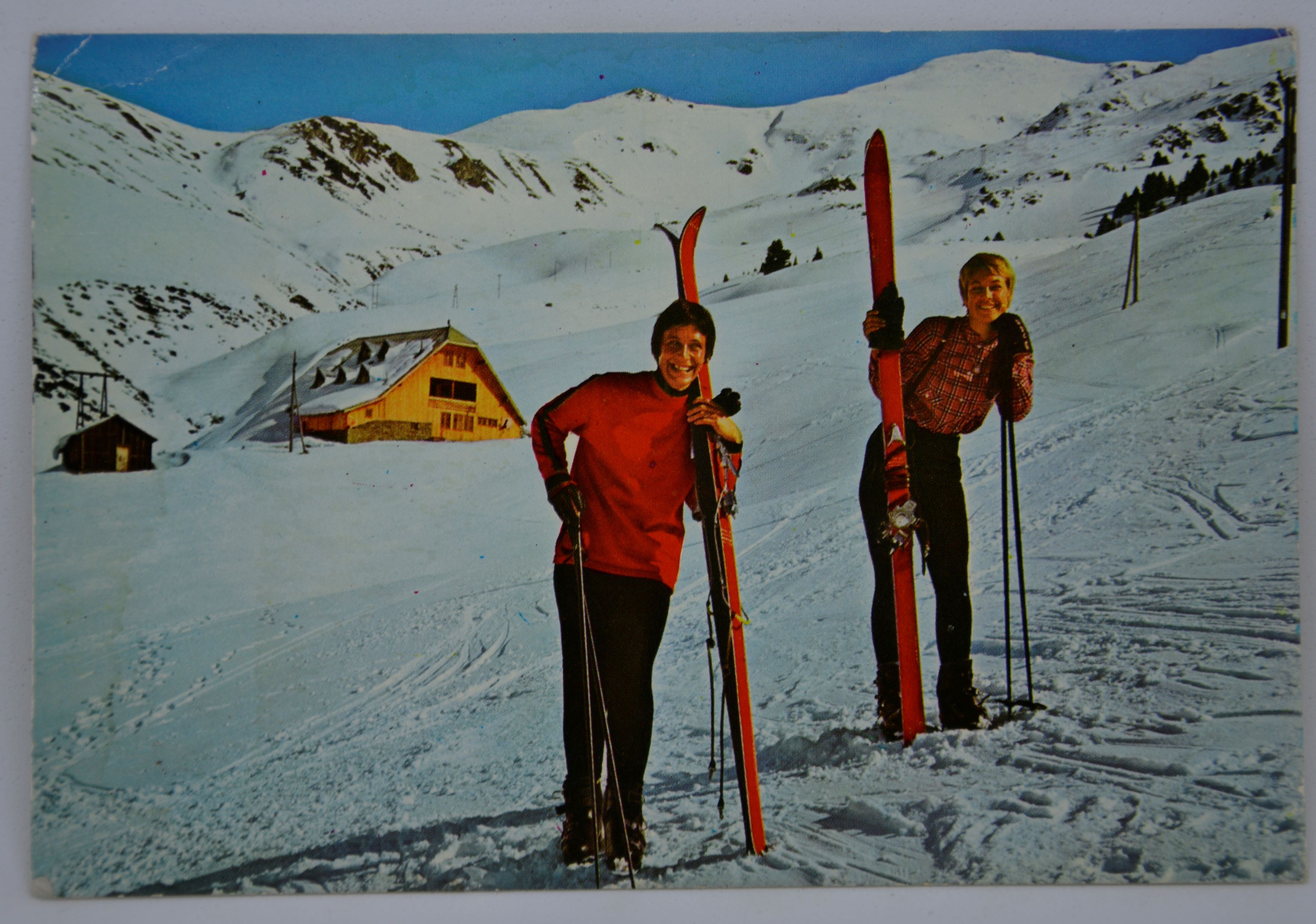
A typical tourist postcard, from the early 1970s, showing the ski resorts of Brezovica in the Sharr mountains. Photo courtesy of Kenneth Andresen.
These postcards also remind us that some places in Kosovo used to be very popular touristic areas. This typical tourist postcard, printed in Belgrade in the early 1970s, shows the ski resort of Brezovica in the Sharr mountains, which was a very popular destination at this time.
It attracted visitors from all over Yugoslavia. Nowadays, it is much less used and the ski station is only frequented by locals.
As Kenneth Andresen explains: “In 1984, for the Winter Olympics of Sarajevo, it was decided to make Brezovica a backup hill for alpine skiing in the event that there was not enough snow in Sarajevo.” Eventually, there was no need to use this alternative area.
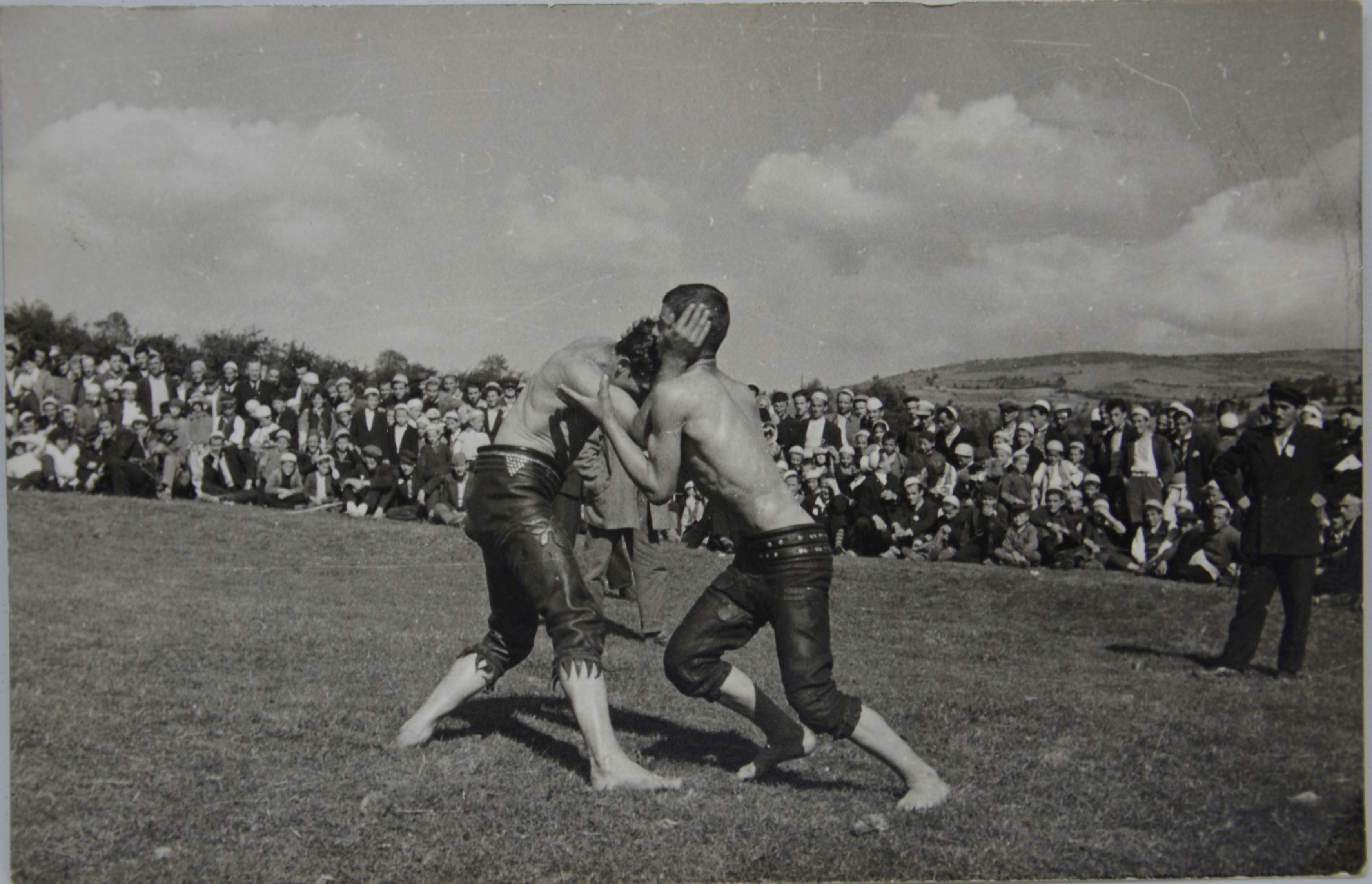
Postcard from 1957, showing the traditional Gorani wrestling competition, called ”Pelivani”, from the Dragash area in Kosovo. Photo courtesy of Kenneth Andresen.
Foreigners visiting Kosovo often shared images with their relatives or friends of what they found typical of Kosovo. This postcard from 1957, which was sent with two others to the same address in Zagreb, shows the traditional Gorani wrestling competition, called “Pelivani”.
It still occurs nowadays in the Dragash area and attracts people from several Balkan countries. Wrestlers wear leather pants and put oil on their bodies.
The greeting on the back of the postcard has nothing to do with what the picture shows, but tells more about the sender’s experience in the region. A woman called Selma is writing from Dragash, to someone called Puba (probably a relative) in Zagreb.
She seems to be on a journey in Kosovo and complains about the food: “I don’t know what to eat anymore, beans in oil and some kind of Elbasani which I can’t eat at all. In the morning, pie in oil, which I also can’t eat.”
She says she spends a lot of time on the mountain and feels “really unnecessary here” and that ”the sun has drowned [her] today.”
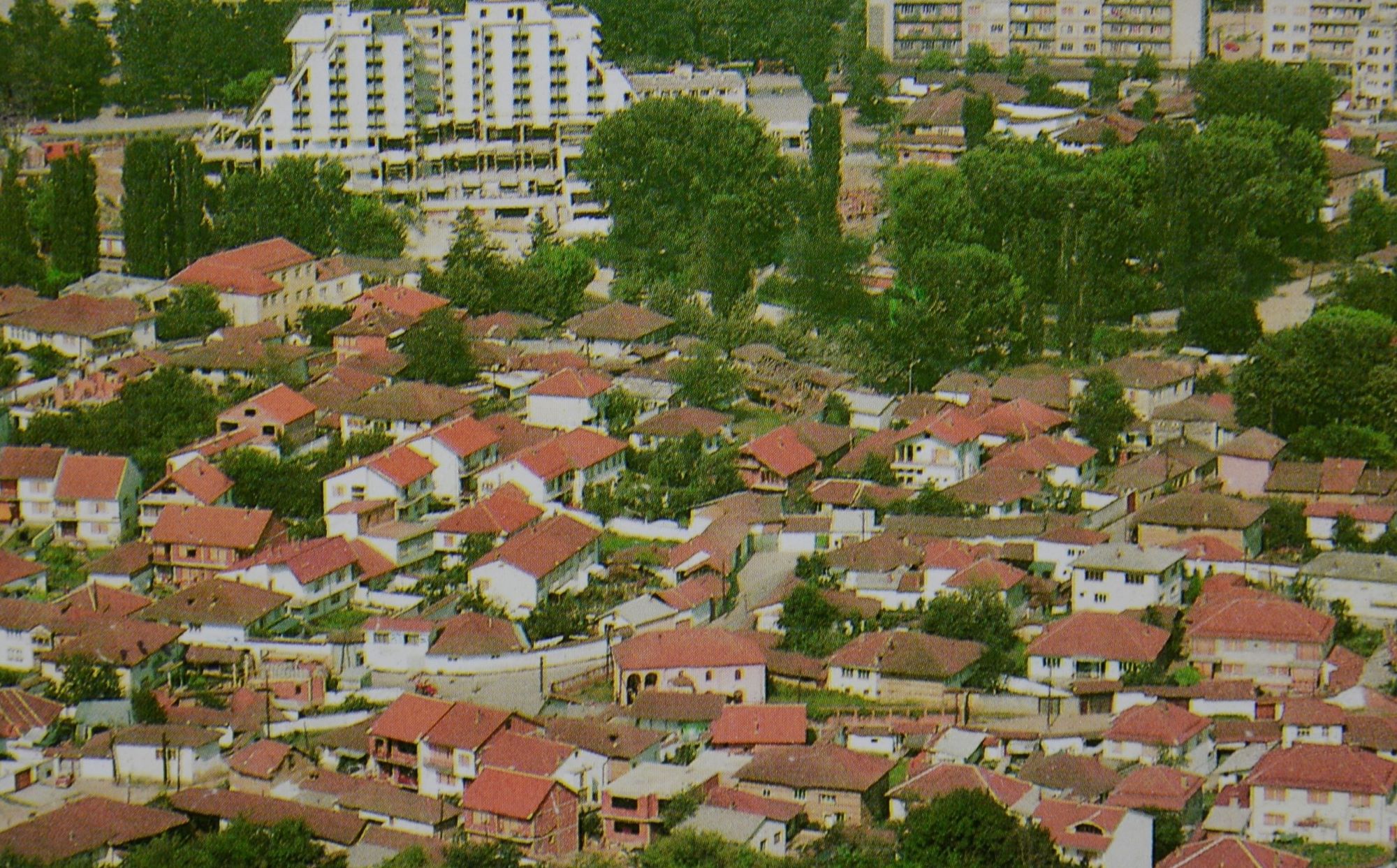
A panoramic view of Gjakova on a postcard of 1989. Photo courtesy of Kenneth Andresen.
Very often, postcards were the only way for foreigners to keep in touch with their friends and family. On the back of this global view of Gjakova in 1989, a soldier called Janez is giving his address in Kosovo to one of his contacts in Kranj, Slovenia, so that he can write him back. He says he has spent the whole day in Peja and concludes: “Hello to everyone at the factory.”
But postcards could also serve a different purpose, as shown by this one mixing several photos of a power plant Elektroprivreda in Kosovo: “There were many postcard commercials also promoting companies” notes Andresen. The postcard had in this case yet another use.
On its back, we find a handwritten radio frequency from 1983: “It is a registration of amateur radio. In the old days, if you found a frequency, you could report that. You noted down the time and sent it or collected it. It was a hobby that many people had.”
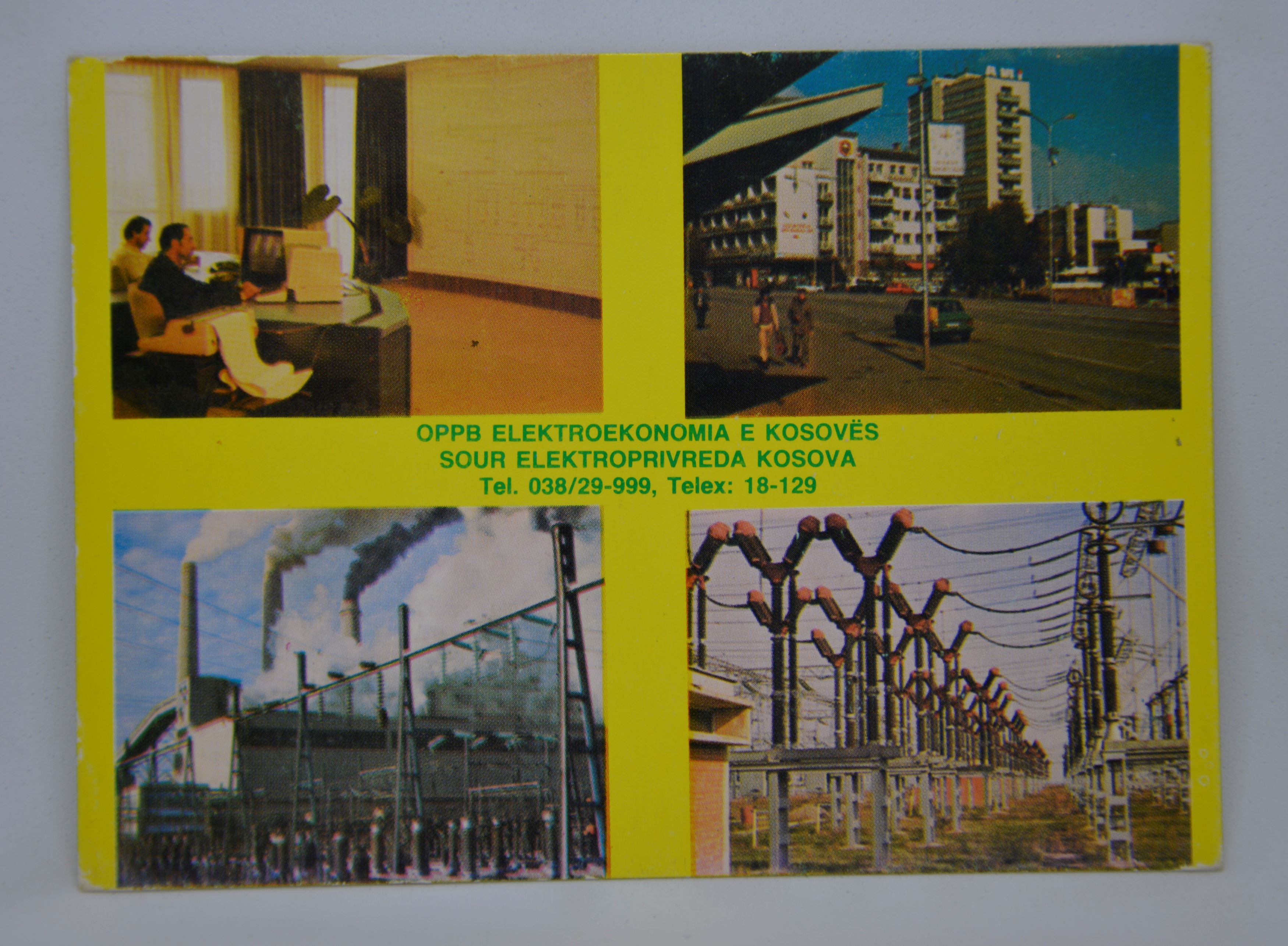
An advertising postcard from the early 1980s, showing the power plant Elektroprivreda in Kosovo. Photo courtesy of Kenneth Andresen.
A scientific approach to postcards
The examples given are just a glimpse of Kenneth Andresen collection’s richness. BIRN first interviewed him in May 2019. Since then, he kept buying new postcards every month, and his collection has grown bigger, to the point that it now consists of more than 1700 items.
The oldest ones are from the beginning of the 20th century, which allows him to cover a timespan of approximately one century, i.e. “from the Ottoman times and then the establishment of the kingdom of Serbia and Slovenes and then Yugoslavia and then we have the 2 world wars and then the whole communist time“ summarizes the Norwegian professor.
He decided to stop it in 1999, because after that the postcard industry changed a lot and became more mass-produced.
He started his collection as a mere hobby, but the professor at the University of Agder in Norway is about to turn his collection into a subject of academic research.
“I want to study postcards as a means of communication from yesterday and see how that practice changed during different times”, he explains. “We can say it is the world’s first practice of social media.”
Andresen’s collection will serve him to feed his research paper with both quantitative and qualitative data.
He has begun to classify them in different categories, depending on their theme (touristic postcard, etc.) and period (Ottoman era, Yugoslavia, etc.) Some will be studied more in detail, taking into account the greetings written on the back of the postcards.
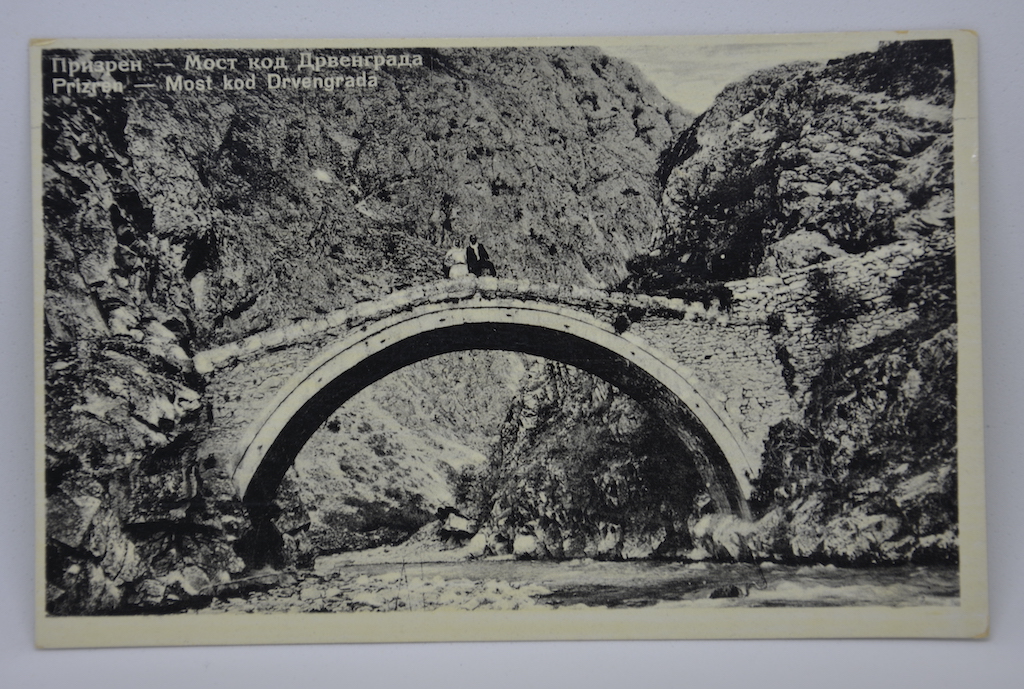
Postcard sent from Prizren to Zagreb in 1939. Photo courtesy of Kenneth Andresen.
An upcoming exhibition
The Norwegian professor also wants to share his collection with the general public. It is already possible to discover some of its postcards on his dedicated Instagram account.
But he also plans to develop a gift-book or coffee table book by summer 2024, as well as a physical exhibition made with one hundred of his nicest postcards representing all towns and time areas.
“The idea would be to present it first in Prishtina, and move it in other cities after, or even other countries such as Serbia” explains Andresen.
Eddie RABEYRIN is an intern at Prishtina Insight. After working for several years in the French local press, he resumed studies to do a Master’s degree in international relations at the University of Strasbourg, France.





